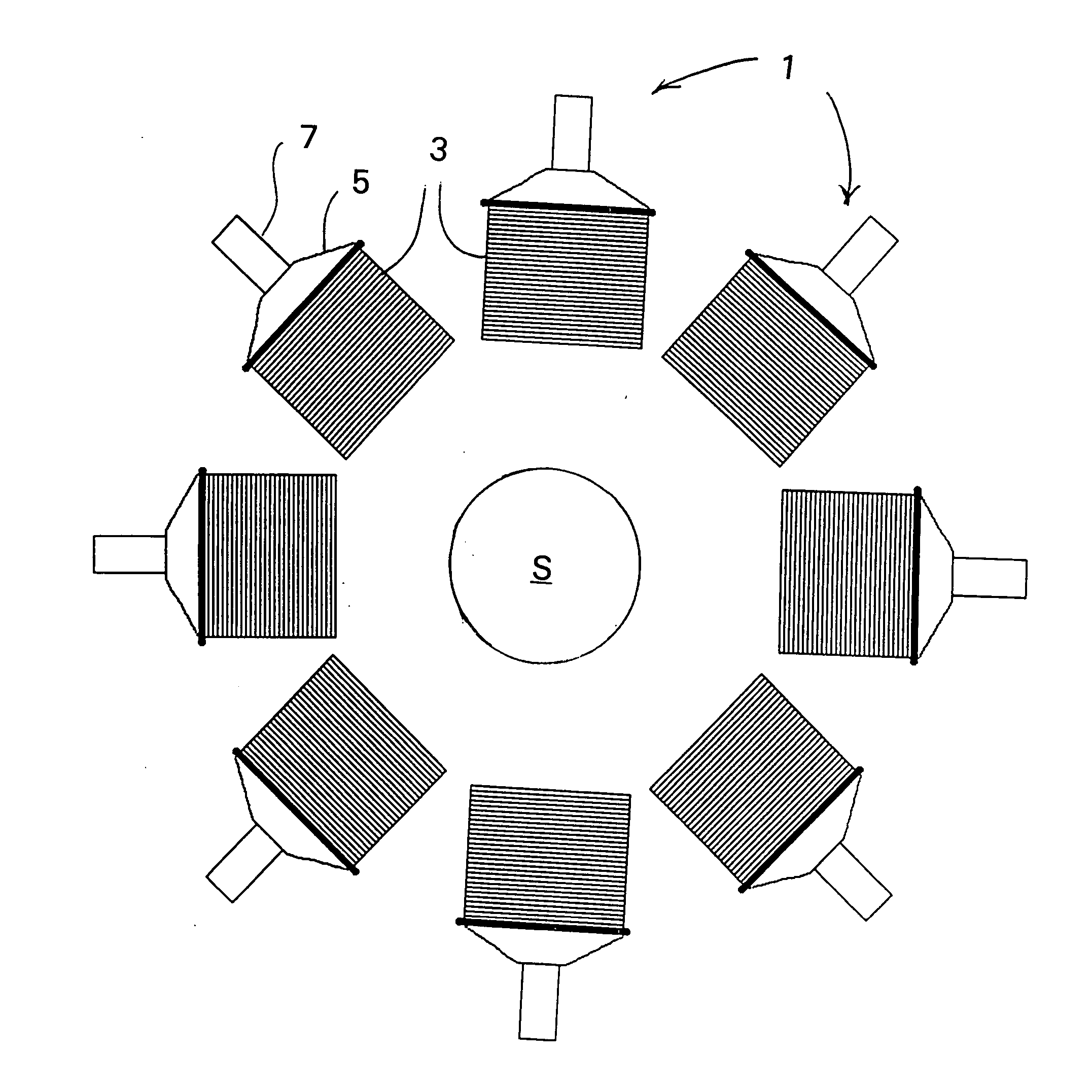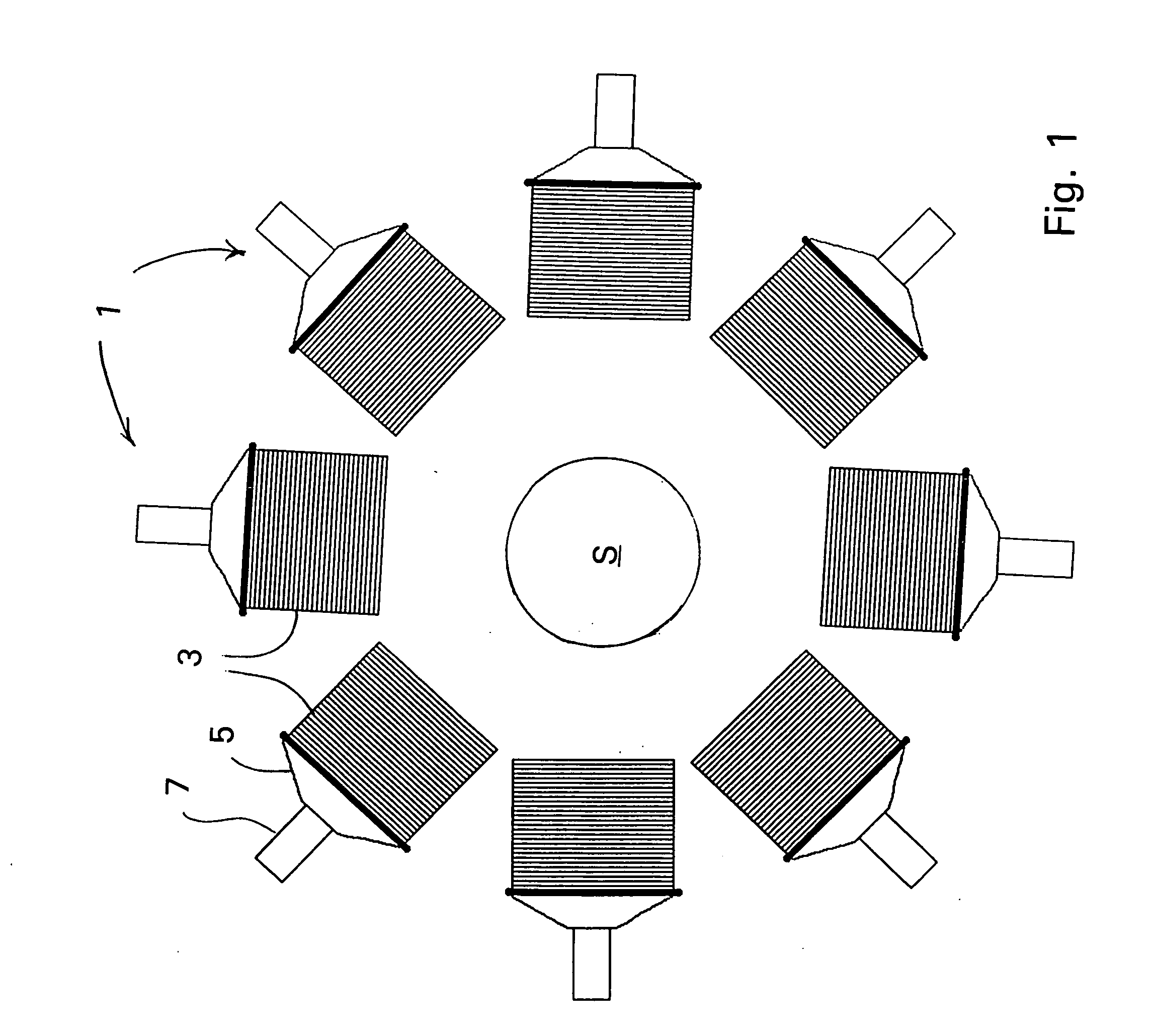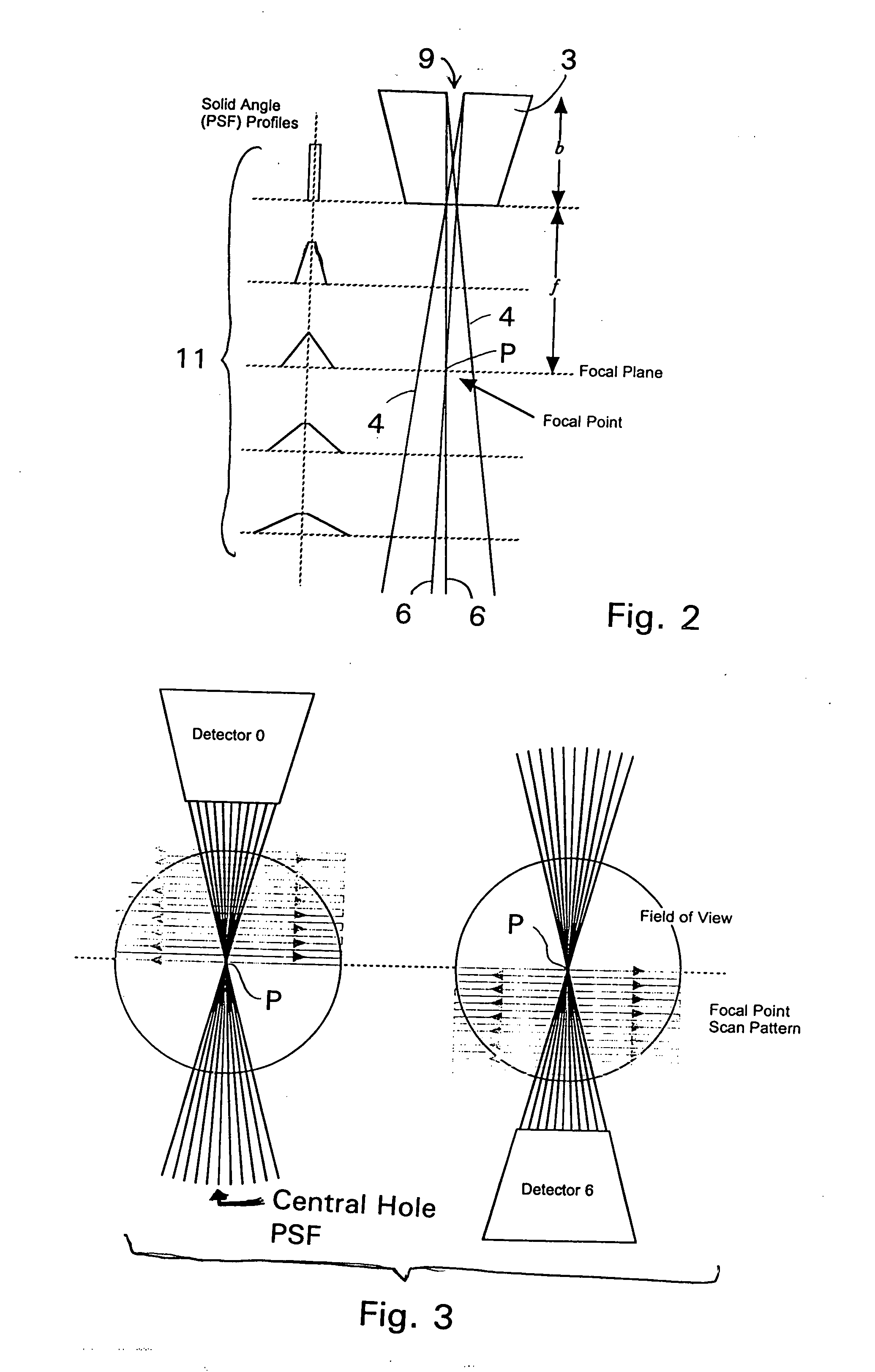Scanning focal point apparatus
a focal point apparatus and scanning technology, applied in the field of collimators, can solve the problems of limited application, low spatial resolution, and even further complicated situation, and achieve the effect of adequate data collection, maximizing spatial resolution and sensitivity
- Summary
- Abstract
- Description
- Claims
- Application Information
AI Technical Summary
Benefits of technology
Problems solved by technology
Method used
Image
Examples
Embodiment Construction
[0049] Observing FIG. 1, the present invention involves a scanning device akin to a scanning microscope. It uses eight identical scanning elements 1, each consisting of a three-dimensional (3D) point focused collimators 3 mated to one or more scintillating crystals 5 each associated with a photomultiplier tube 7. An acquisition or “scan” of a source S is nothing more than the 3D convolution described above of the source distribution of injected radionuclide with each detector's point-spread function (PSF). Although the present invention employs an iterative reconstruction to deal with absorption, scattering and other complications, a simple multi-detector, windowed, 3D deconvolution works quite well. As with any scanning system, intrinsic resolution and sensitivity are completely characterized by the point-spread functions of the detectors.
[0050] Turning to FIG. 2, to derive the PSF, first consider a detector whose collimator 3 consists of a single tapered hole 9 of bore length b a...
PUM
 Login to View More
Login to View More Abstract
Description
Claims
Application Information
 Login to View More
Login to View More - R&D
- Intellectual Property
- Life Sciences
- Materials
- Tech Scout
- Unparalleled Data Quality
- Higher Quality Content
- 60% Fewer Hallucinations
Browse by: Latest US Patents, China's latest patents, Technical Efficacy Thesaurus, Application Domain, Technology Topic, Popular Technical Reports.
© 2025 PatSnap. All rights reserved.Legal|Privacy policy|Modern Slavery Act Transparency Statement|Sitemap|About US| Contact US: help@patsnap.com



